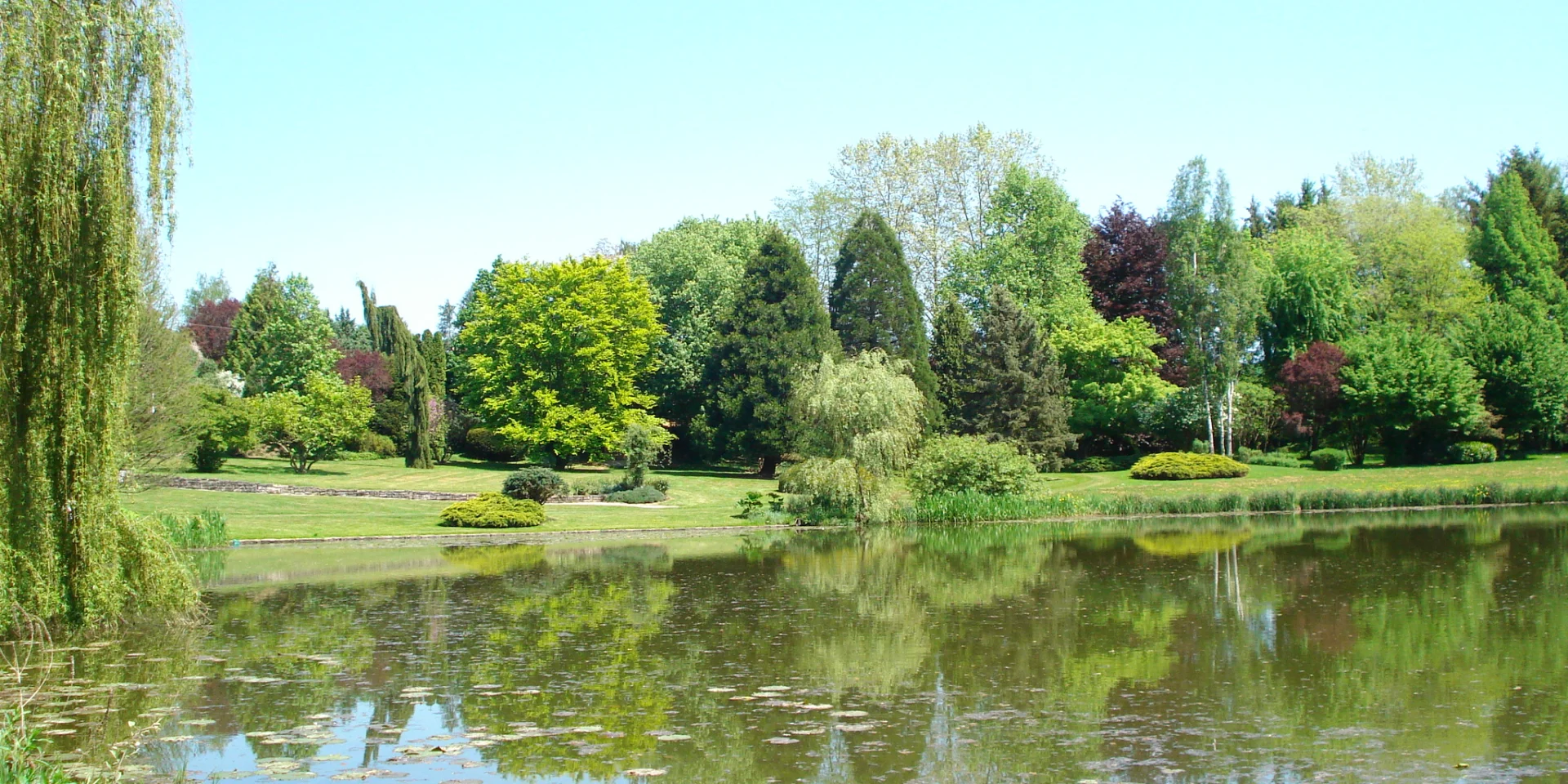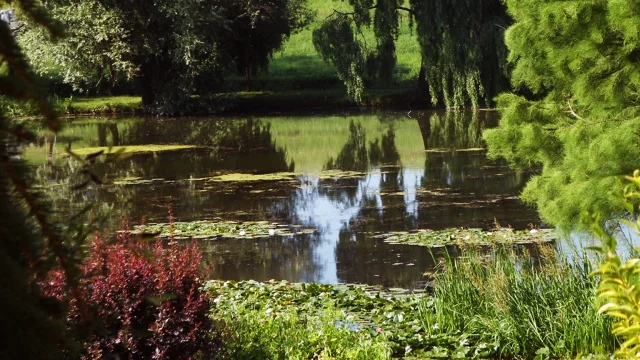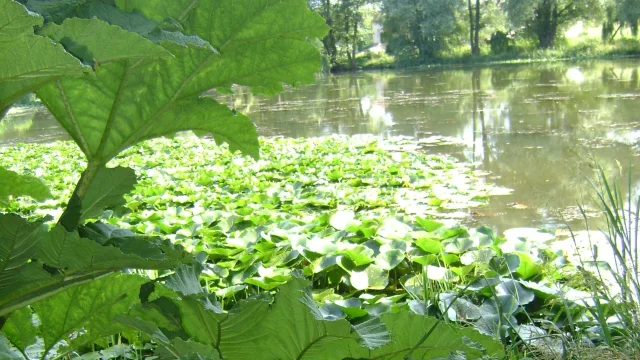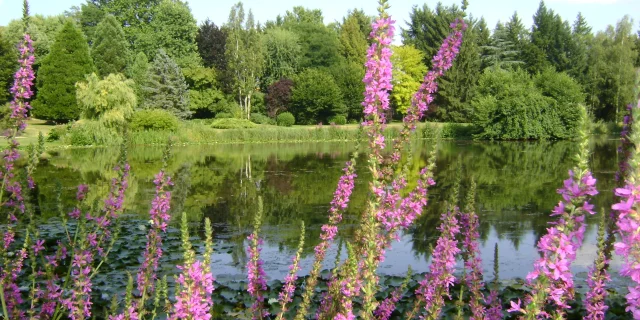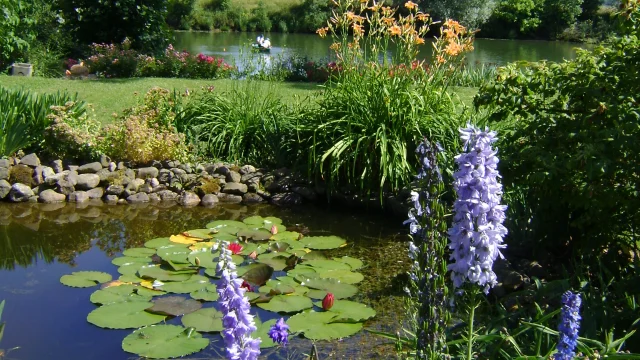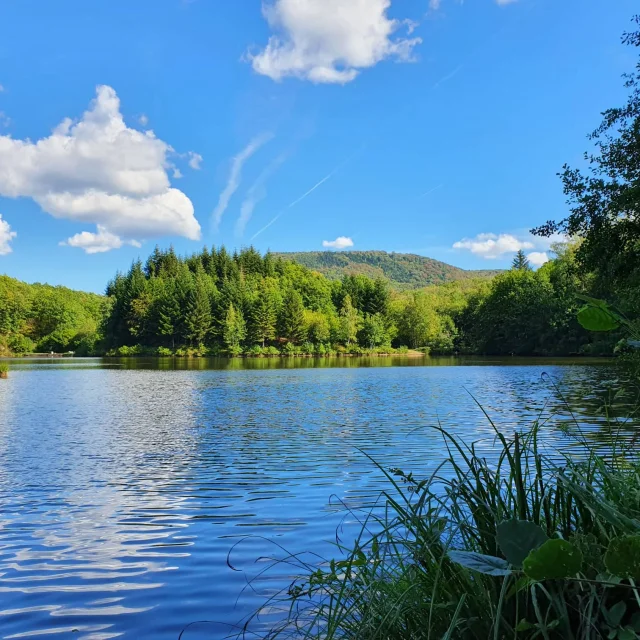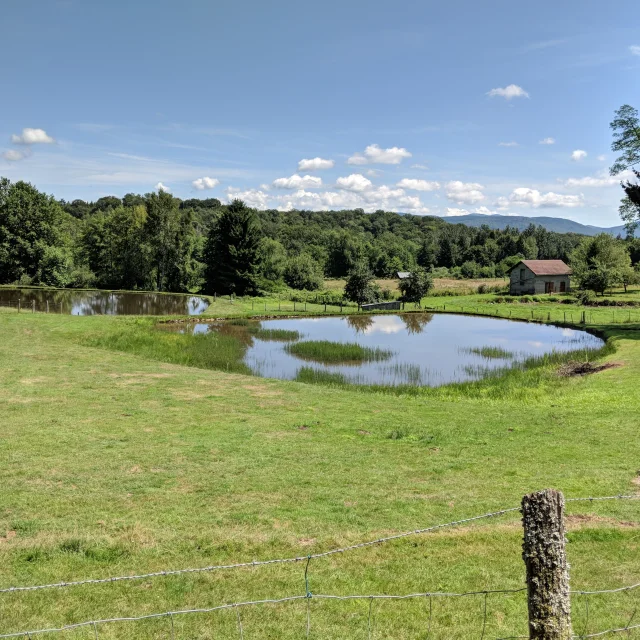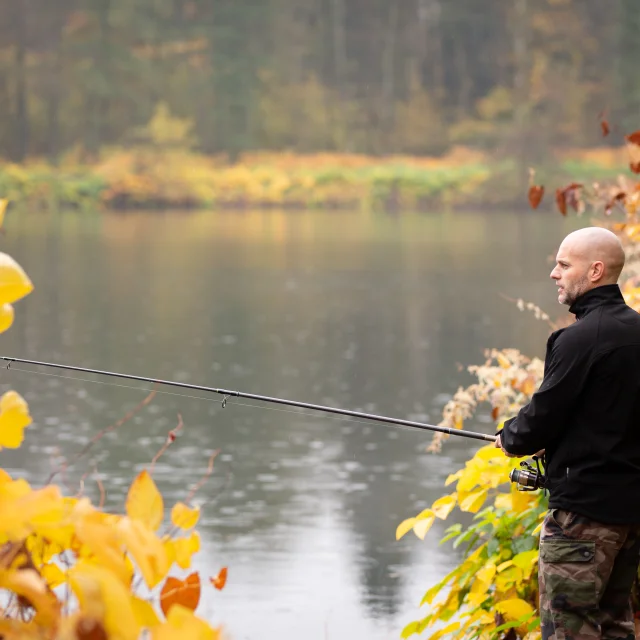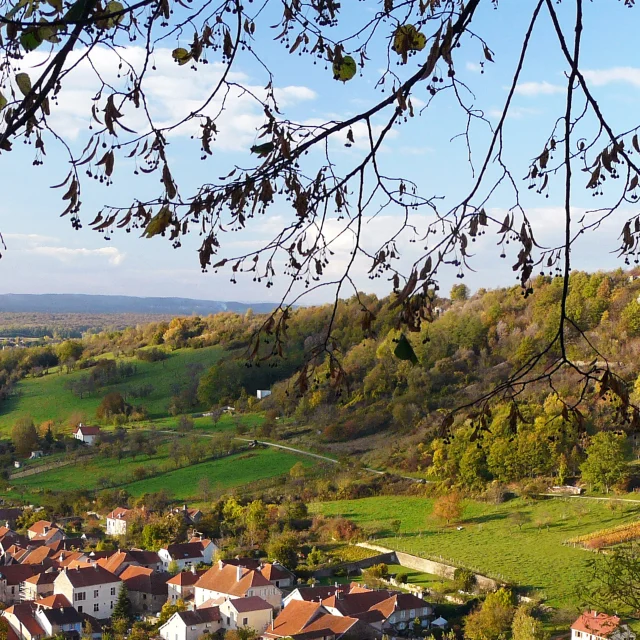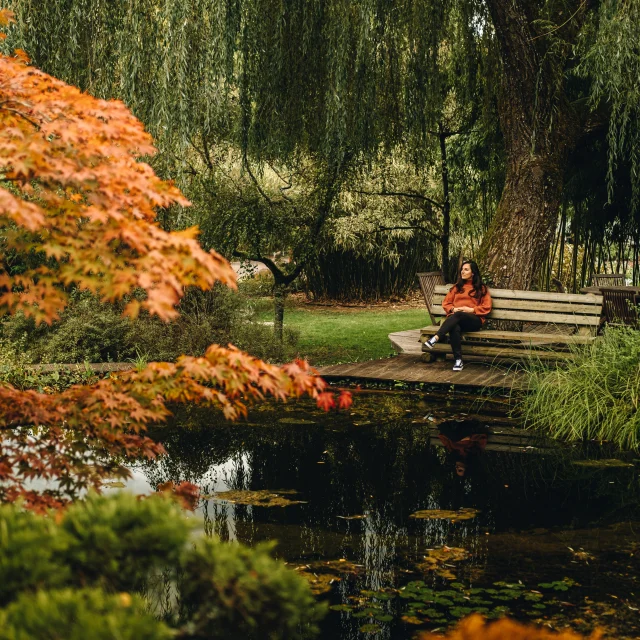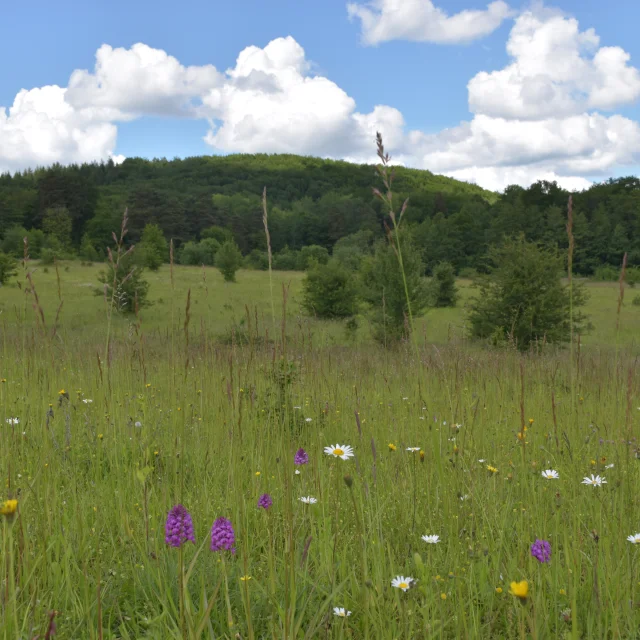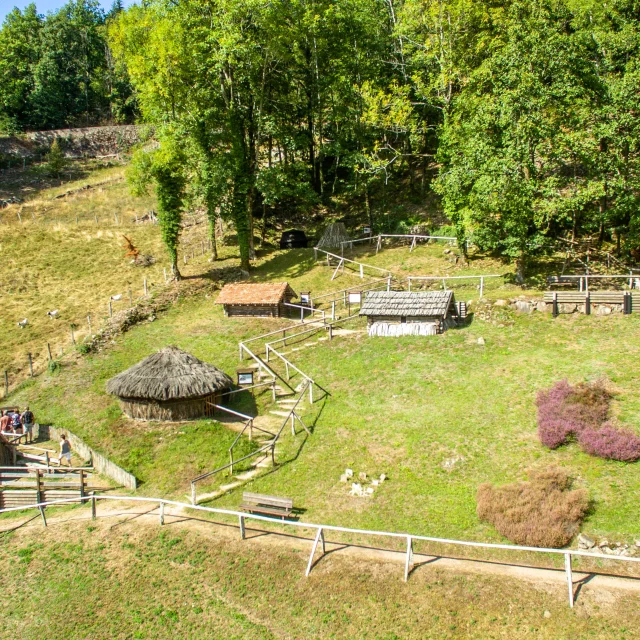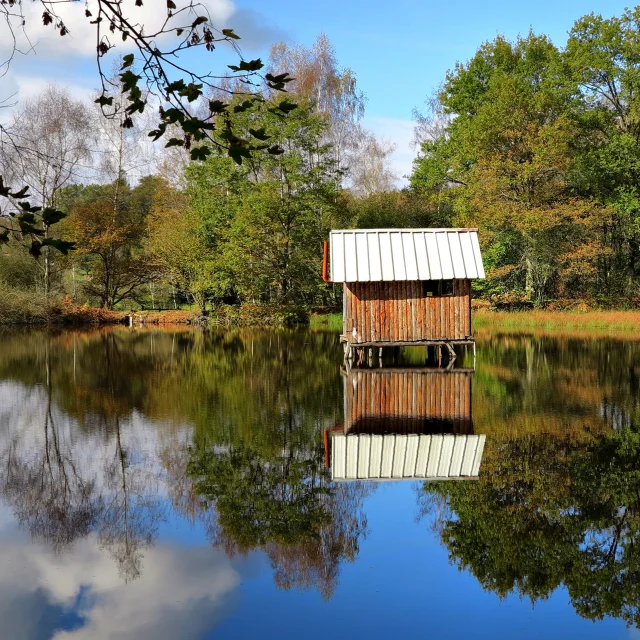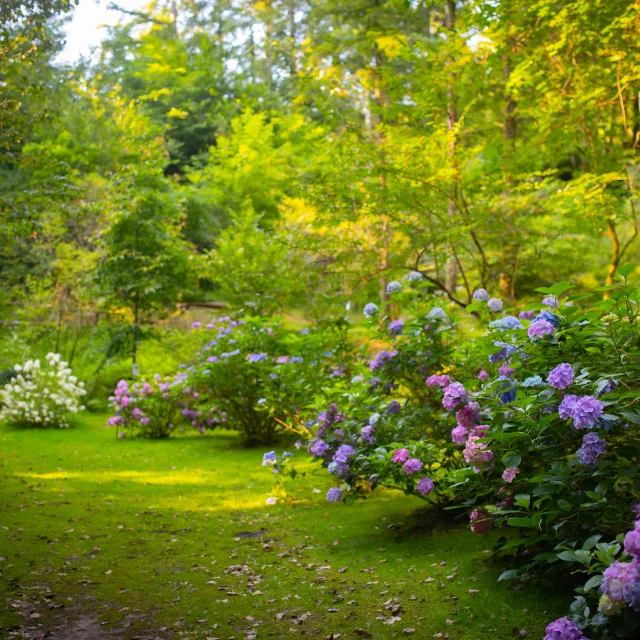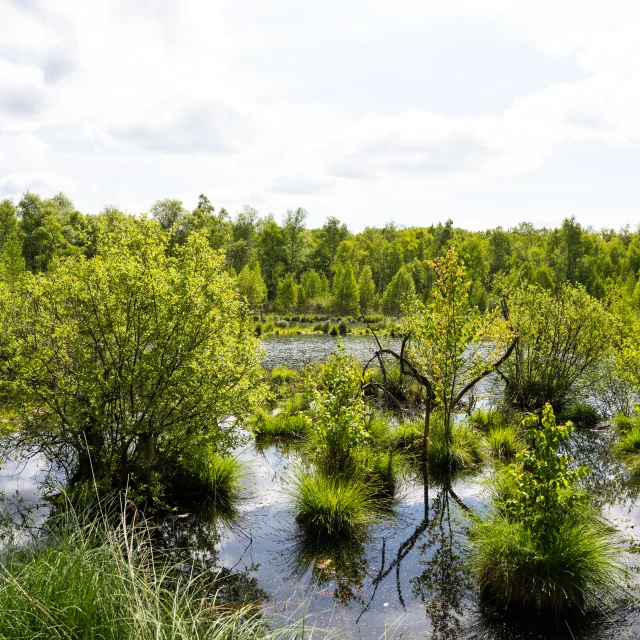The history of the Parc de l’Étang began in 1969 with the acquisition of a plot of land that was to become a natural amenity area around a house. The land, which initially consisted of wet pastures, was crossed by the Dhuys stream, the source of which is in the Velesmes woods a few kilometres away. The geographical location and natural gradient have allowed the creation of a central pond, the centrepiece of the garden.
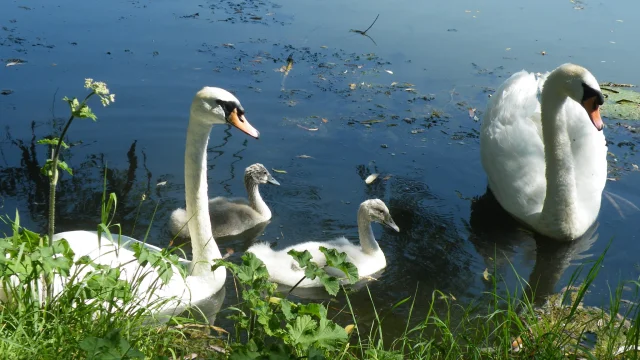 Swan on water, at the Parc de l'Etang de Battrans - Vesoul - Val de Saône
Swan on water, at the Parc de l'Etang de Battrans - Vesoul - Val de SaôneThe digging of the lake created a large quantity of earth, which was redistributed over the land to form paths, terraces and embankments, thus outlining the first contours of the garden. From the house, gravelled paths lead to winding lawns, inviting visitors to wander among the tall trees and flowerbeds, creating a harmonious and soothing pathway.
